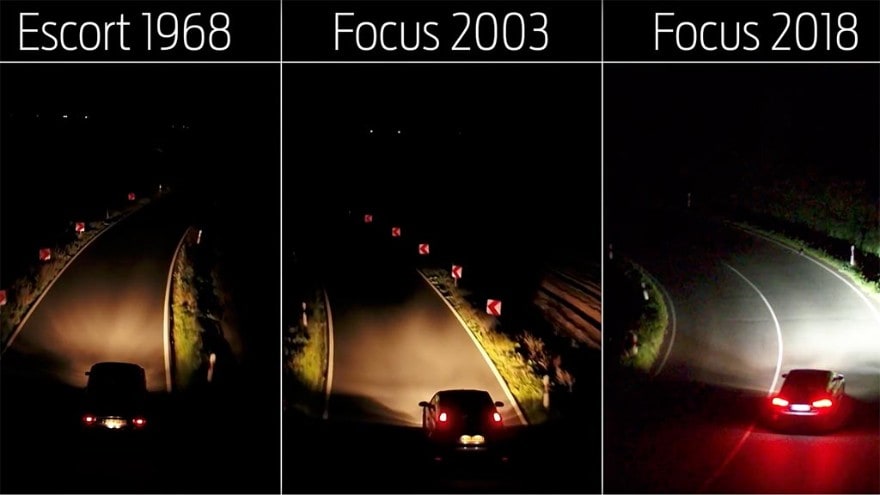Ford of Europe announced a new ways of making driving in the dark easier and more comfortable: have your headlights swivel to follow curves in the road ahead, guided by GPS and a high-definition digital map in the vehicle. Engineers from Ford Research and Advanced Engineering Europe are testing technology that uses real-time location data to effectively show the car the way to go. The predictive smart headlight system directs beams into upcoming corners even before drivers may have seen them, illuminating hazards and other road users more quickly and effectively.
The prototype advanced lighting system uses GPS location data, advanced technologies and highly accurate street geometry information to accurately identify turns in the road ahead. An algorithm calculates the trajectory and speed of the vehicle to proactively adjust the direction of its headlights, providing optimal light coverage of bends, junctions and even hazards lurking around the corner.
If the vehicle encounters a stretch of road where location data is not available, the system will work alongside camera and steering-based dynamic headlight bending technologies to continue to intelligently light the road until the location data improves. In 2018, the company first pioneered using road signs and lane markings as cues to adjust headlight beams to better illuminate the road ahead, especially around junctions. The at that time new Ford Focus could also widen the beam when approaching a roundabout so that drivers could see pedestrians and cyclists at the side of the road more easily.
For the just unveiled GPS-powered swiveling headlamps, researchers made extensive use of digital twin simulation that recreates the physical world in a virtual environment. The simulator accurately calculates how light falls and reflects in the real world, enabling researchers to better visualize and optimize the technology for drivers.
Michael Koherr, Ford European lighting research engineer, said: “The predictive lighting technology we are developing now means that one day driving in the dark could be as simple as just following your headlights. This new map- and location-based system is the next step on our quest to make driving at night no more difficult or stressful as during the day.”
A 2018 study of more than 16,000 motorists in the UK found that half of them preferred not to drive in the dark, a quarter said they get nervous in a car on unfamiliar roads in the dark, and one in five said they feel nervous driving on unlit roads in the dark.
For better or for worse, the GPS-steered adaptive headlights may be limited to Europe. Overseas automakers have found it difficult to flex U.S. National Highway Traffic Safety Administration headlight regulations to allow other innovations.






